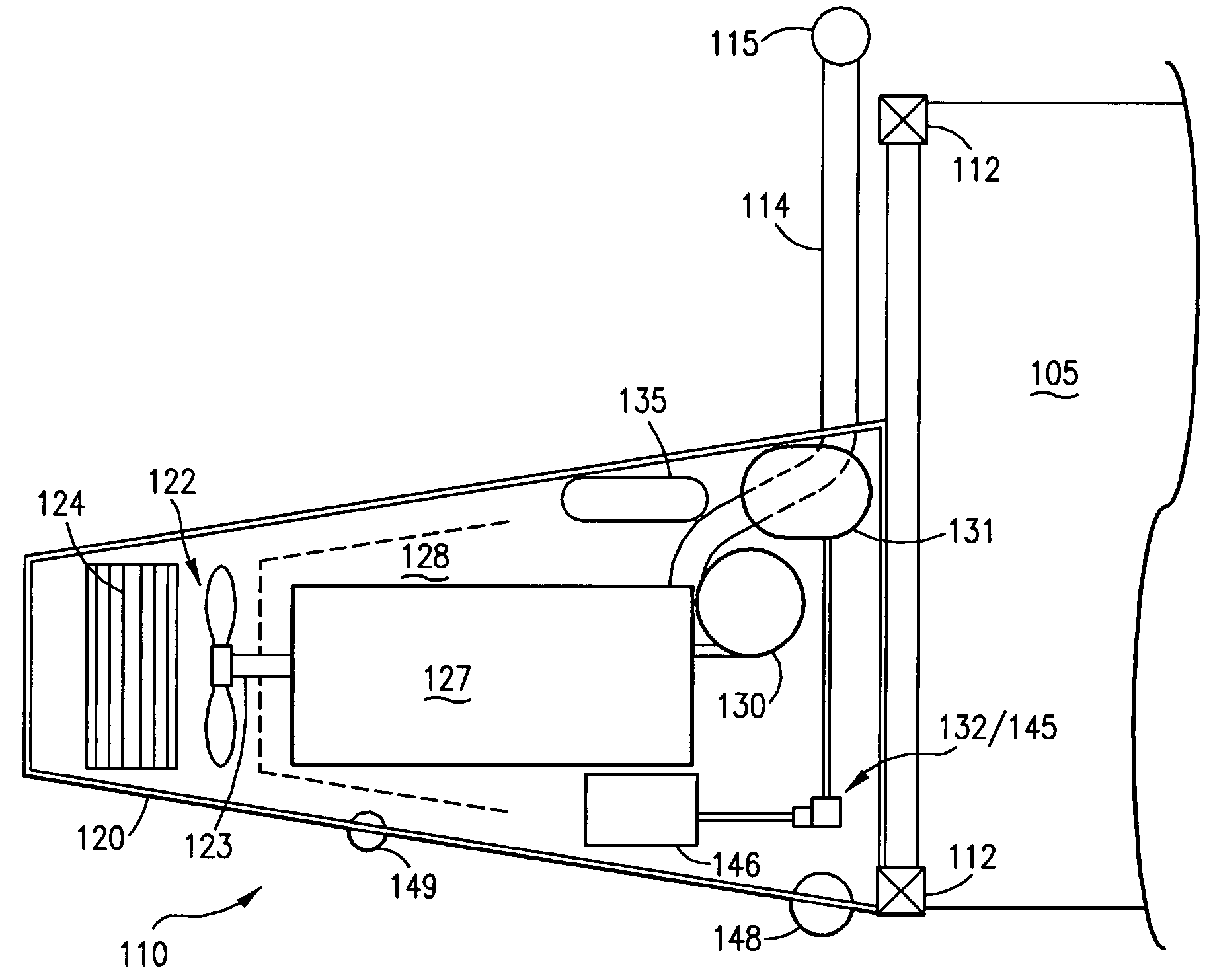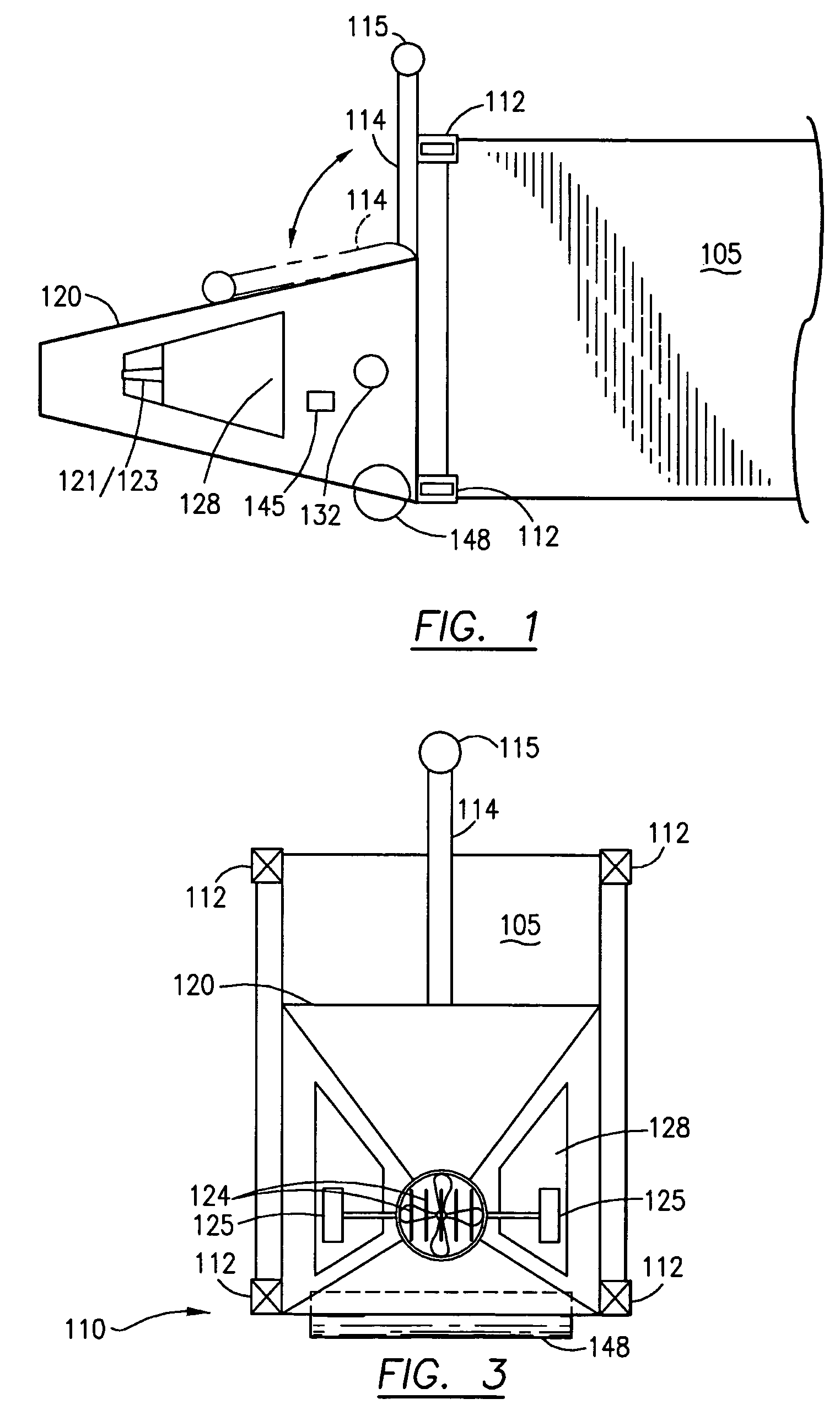Autonomous swimming cargo containers
a cargo container and autonomous technology, applied in the field of maritime operations, can solve the problems of large cargo vessels, inability to approach shallow shores or even ports, high inefficiency of methods, and deep dra
- Summary
- Abstract
- Description
- Claims
- Application Information
AI Technical Summary
Problems solved by technology
Method used
Image
Examples
Embodiment Construction
[0019]The limitations of prior systems described above are overcome by the novel improvements of our invention, which are illustrated by the following presently preferred embodiment. This embodiment is directed to an apparatus, method and system for autonomous maritime movement of cargo containers. For convenience we refer to this embodiment as an autonomous swimming cargo container (“ASCC”). The major system elements of the ASCC are the propulsion unit 120, the ballast unit 160 and the container 105, as well as remote units that interact with an ASCC. The present invention also provides methods of operation for the ASCC and remote / supporting systems.
[0020]While the present invention is described below in greater detail, this is for convenience only and is not intended to limit the application of the present invention. In fact, after reading the following description, it will be readily apparent to one skilled in the relevant art(s) how to implement the following invention in altern...
PUM
 Login to View More
Login to View More Abstract
Description
Claims
Application Information
 Login to View More
Login to View More - R&D
- Intellectual Property
- Life Sciences
- Materials
- Tech Scout
- Unparalleled Data Quality
- Higher Quality Content
- 60% Fewer Hallucinations
Browse by: Latest US Patents, China's latest patents, Technical Efficacy Thesaurus, Application Domain, Technology Topic, Popular Technical Reports.
© 2025 PatSnap. All rights reserved.Legal|Privacy policy|Modern Slavery Act Transparency Statement|Sitemap|About US| Contact US: help@patsnap.com



